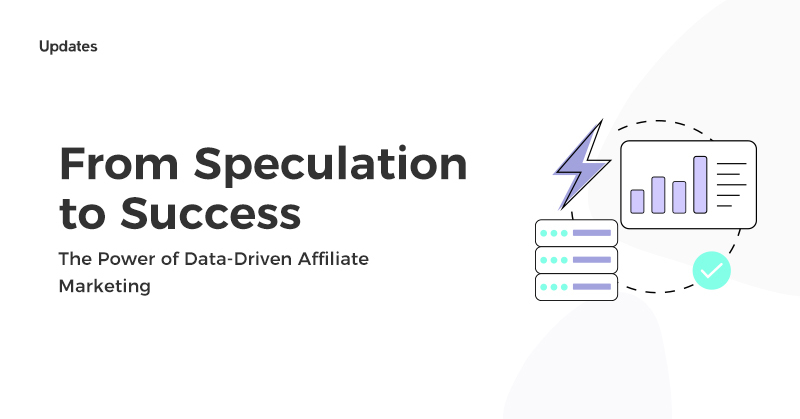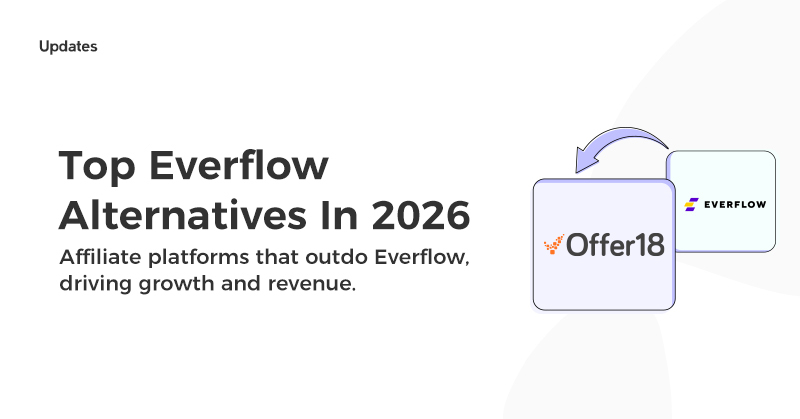
Share
Ad spending can be a costly investment, setting you back at least a couple hundred bucks a month. Even then, conversions are not always guaranteed. In many cases, you’ll end up getting lots of impressions but very few sales.
Instead, businesses turn to affiliate marketing as a way to cut costs. This approach allows you to pay affiliates a commission only when they drive conversions, making it a more financially sound strategy. You can get started with this marketing strategy by building your own affiliate program.
Are you just getting started with affiliate marketing? Continue reading to learn how to build a successful affiliate program for your own business, step by step.
What Is an Affiliate Program?
In an affiliate program, a brand owner works with an affiliate who promotes the brand’s products through their content. The brand owner is responsible for setting up the affiliate program and monitoring the progress of the affiliates. This includes adjusting their earning percentages, bonuses, and more to ensure the program's success.
Why Is Affiliate Marketing So Popular?
Why is affiliate marketing preferred over other marketing strategies? It’s because affiliates are only compensated when they generate a sale. This incentivizes them to maximize their sales, making it a strategy that not only brings in a good ROI but also saves you costs on ads that may not yield results.
Another reason for its popularity is the type of customers it attracts. Affiliates already have an audience interested in their content, including product reviews and recommendations. So, when an affiliate sends a customer your way, this customer is pretty much ready to buy. They’re also more likely to turn into regular customers and leave positive reviews.
The numbers don’t lie. According to a 2023 Matter Communications survey, 69% of respondents are more likely to trust a family member, friend, or influencer they follow for product recommendations over the brand itself.
Finally, with affiliate marketing, there’s no need to allocate a portion of your time for advertising. You don’t have to create ads, write copy, or promote your products all over your socials – the affiliates will do all this for you.
We’ll now show you how to build an affiliate network and other essential steps in creating an affiliate program:
How to Build a Successful Affiliate Program in 7 Steps
Here’s how to build an affiliate network, even if it’s your first time doing it:
1. Set Goals and KPIs
Setting goals is the first step in creating an affiliate program. You should use them as the baseline for your program, upon which you’ll adjust your commission rates, product portfolio, and KPIs.
Here are the most popular reasons for creating an affiliate program:
-
To boost the sales of a particular product
-
To raise awareness of your brand
-
To instill trust in your customers
-
To advertise more authentically
-
To take advantage of a pre existing customer base (your affiliates’ followers)
-
To save money on ads
-
To shift your focus to more critical business matters
-
To generate sales in your sleep .
From here, you can choose which KPIs you want to track. For example, you can calculate total sales generated to evaluate your program's overall performance. Other KPIs include conversion and click-through rate, average order value, churn rates, and so on.
2. Analyze Competitors’ Affiliate Programs
Discover whether any of your competitors have successful affiliate programs that bring in good money. If they do, you want to analyze their structure to see why they’re popular among affiliates. You want to answer questions like:
-
What products or services are being promoted?
-
How much do affiliates earn per product sale?
-
Are there different performance tiers for affiliates?
-
Do affiliates get bonuses for specific milestones?
-
What are the affiliate terms and conditions?
From here, you’ll be able to identify the key strengths of each affiliate program as well as gaps you could fill. The “gaps” could be special features only your affiliate program has, which will give you a leg-up when the time comes to sell your program to potential affiliates.
3. Choose a Commission Structure
This is the step most brand owners need help with, especially if their business is in the growing stages. While every affiliate program has its own commission structure, there are some general considerations when setting prices:
-
Benchmark against competitors to understand the industry average, which will help you set your own prices.
-
Analyze your profit margins to get a better idea of what you can afford to pay your affiliates without going over budget. This will help you establish a sustainable pay structure.
-
Factor in special offers like recurring or lifetime commissions for high-performing affiliates and how much they could potentially cost you.
Of course, this is an oversimplified list of factors you should consider when setting up a payment structure for your affiliates. Once you’ve set your goals, calculated your budget, and established KPIs, you’ll have a clearer picture of what it should look like.
4. Implement an Affiliate Tracking Software
The next step is to set up affiliate network tracking software to automatically gain insights into each affiliate's performance. Affiliate software features a dashboard that lists the latest performance stats and shows how much you’re spending and earning through your affiliates.
Our all-in-one tracking software features chat integration, which keeps affiliate communication within the program. In addition, you can conveniently receive invoices directly in the software and send out payments through all the major payment gateways.
We also include affiliate fraud prevention in our software to prevent your affiliate spending from going toward clickbots and fake leads. Use our click Spamming Defender to identify programmed clicks and our Traffic Source Validator to reject traffic from bots and more.
Finally, we give you the option to create affiliate tiers to single out and reward your highest-earning affiliates. This will also help incentivize those who make fewer sales, as they’ll have to pass sales and lead milestones for higher commissions.
We offer a free trial so you can test our software before launching your campaign.
5. Choose Products to Promote
Once you’ve got your software set up, you can start making a list of products you’d like to promote. However, you should consider that your newest products aren’t always what your audience is looking for at the moment. Here are some ways to find out what your customers want to buy:
-
Do keyword research for frequently searched terms related to your products. You can also use Google Trends to see what people are buying right now.
-
Look at your competitors’ top sellers. Chances are, that’s what your audience wants to see from you. Even better, read their customer reviews and identify where your competitors are lacking in quality so you can offer a better deal to your customers.
-
Calculate how much you’d earn on high-ticket vs low-ticket items. For example, high-ticket items have higher profit margins but lower conversion rates. You might benefit more from selling more accessible products at higher numbers.
6. Find Affiliates
This is the last step before you launch your affiliate program. There are a few ways you can go about finding the affiliates for your program:
-
Use your website to showcase your affiliate program. Make sure to include the pay structure, the products you want to promote, and an overview of your ideal candidate. Don’t forget to include special bonuses to make the program more appealing to applicants. Finally, keep it short and simple and include a signup form where affiliates can reach out to you at the end. You can put the affiliate program banner at the footer of your front page so that it’s easy to find.
-
Create a mailing list and start cold emailing potential collaborators. To find email addresses, use affiliate databases, network within your community, and read forums.
-
Find your competitors’ top affiliates by looking at their social media followers, tagged posts, hashtags, etc. Use every social media at your disposal: YouTube, Instagram, Facebook, TikTok.
-
Reach out to your loyal customers and get them to do the promoting for you. After all, they know your products best and can authentically sell them to your audience.
Once you have a list of your affiliates, you can launch your campaign and start optimizing.
7. Track and Optimize the Program
Once your affiliate program is up and running, you can opt in periodically to see how your affiliates are doing. You can completely automate this step using tracking and analytics software, which will give you:
-
Customer touchpoints after conversion
-
Real-time insight into affiliates’ performance
-
Your spending on each affiliate link, and more.
From here, you’ll be able to analyze your profit against your costs and save money if possible. You’ll also be able to pinpoint your best-earning affiliates and reward them accordingly, as well as eliminate those who are inactive and are not producing results.
Conclusion
Affiliate programs are an excellent way to boost sales while minimizing ad costs. Instead of running ads on Google, for example, you give affiliate links to social media influencers who come up with an engaging script to get people to buy.
Affiliate marketing is attractive to businesses primarily for its cost-effectiveness. Your affiliates don’t get paid until you do, meaning you only spend on advertising when you get something in return. However, this strategy is also time-effective in that it doesn’t require you to sit down and create ads – this is the job of the affiliate.
There are many ways to build an affiliate program, but our 7-step guide is a good starting point. Don’t forget to make proper adjustments that suit your business’s needs, and you should have a productive start.
Related News

From Speculation to Success: The Power of Data-Driven Affiliate Marketing
When it comes to evaluating the campaign's effectiveness, your hunches and speculation game is ON! However, when competition is fierce, data is enormous, consumer pref
Sep 12, 2025
Offer18 Secures Prestigious ISO/IEC 27001:2022 Certification
Offer18 has recently secured the prestigious ISO/IEC 27001:2022 certification, strengthening our position in the affiliate marketing landscape as a reputable instituti
Jul 28, 2025
Offer18 Brings the Affiliate Pulse to the ChinaJoy
What Is The ChinaJoy Event? A global leader in the field of games and digital entertainment, the ChinaJoy event focuses on gaming as its core business. It cov
Jul 22, 2025
Top Everflow Alternatives In 2026
Everflow is an enterprise-level affiliate tracking solution built to meet the dynamic needs of established global brands, agencies, and ad networks. Everflow has been
Jul 21, 2025